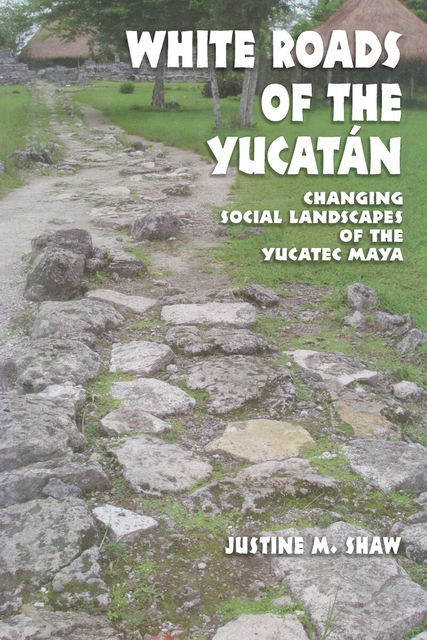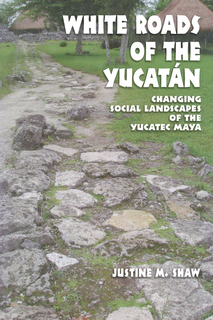White Roads of the Yucatán
Changing Social Landscapes of the Yucatec Maya
Maya sacbeob, or raised “white roads,” are often considered a single class of features, with a sole purpose. In this first systematic examination of their functions, meanings, arrangements, and construction styles, Justine Shaw reveals that these causeways served a variety of cultural and natural functions. In White Roads of the Yucatán, author Justine Shaw presents original field data collected with the Cochuah Regional Archaeological Survey at two ancient Maya sites, Ichmul and Yo’okop. Both centers chose to invest enormous resources in the construction of monumental roadways during a time of social and political turmoil in the Terminal Classic period. Shaw carefully examines why it was at this point—and no other—that the settlements made such a decision. She argues that both settlements used the sacbeob as a method of socially integrating the largest, most diverse and dispersed population in the Cochuah region. She further demonstrates that their use of the sacbeob, in concert with other innovative strategies, allowed Ichmul and Yo’okop to outlast many of the sites that they may have sought to emulate and to flourish during a time of tremendous sociopolitical and economic change. In addition to her detailed discussion of these two sites, Shaw provides an exhaustive review of the literature of Maya sacbeob archaeology, describing various interpretations of construction, features, and variability. This synthetic and interpretive treatment will aid researchers working on a variety of complex civilizations with road systems, as well as those interested in core-periphery relationships, cultural collapse, and social integration.
Texts
Published
- Published
- This text has 0 annotations
- This text has 0 highlights
Metadata
- isbn978-0-8165-4888-0
- publisherUniversity of Arizona Press
- publisher placeTucson, AZ
- rightsCC BY-NC-ND 4.0
- rights holderUniversity of Arizona Press
We use cookies to analyze our traffic. Please decide if you are willing to accept cookies from our website. You can change this setting anytime in Privacy Settings.



